History of the DLIA
“Nature does not hurry, yet everything is accomplished”
~Lao Tzu
Working to Improve Deer Lake since 1939
The information contained here was graciously gathered and assembled by Joanna Victor. Thank you Joanna!
PREFACE
The Deer Lake Association was founded in 1939. Today, 70 years later, the Association is acknowledged as one of the premier lake associations in the state of Wisconsin. The mission of the Association is to improve the quality of life on Deer Lake.
The history was compiled from various files and documents stored in closets of cabins around the lake as well as many conversations. We are aware that there are periods in the Association’s history in which little, or no, information is available. We thank Joanna Victor, a long-time lake resident and all others who contributed to this history. We hope you will enjoy.
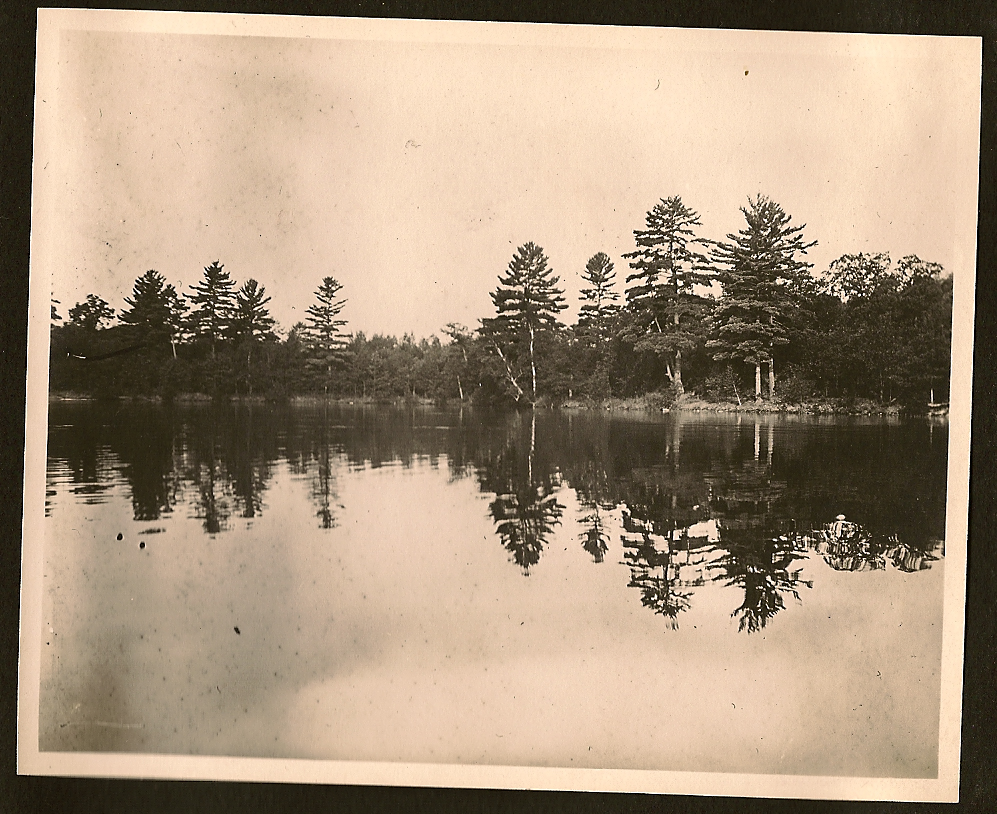 And so it began….
And so it began…. 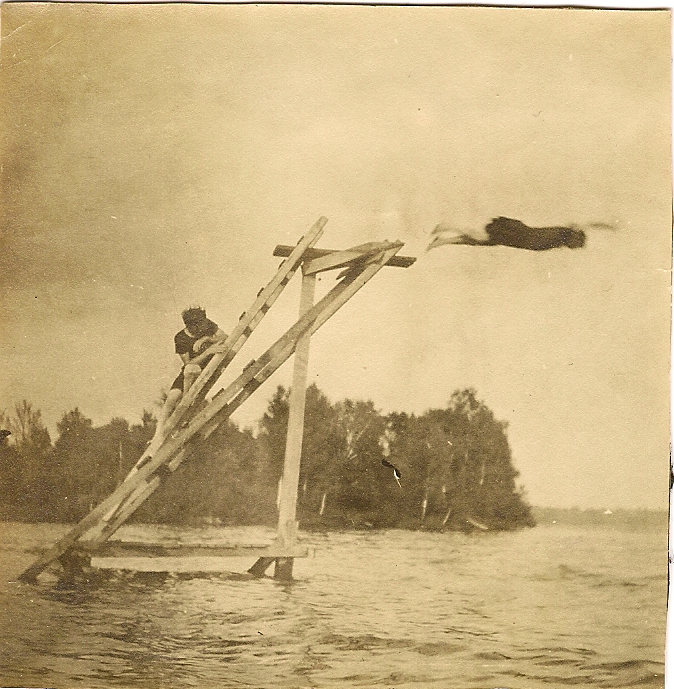 From 1939 to 1969
From 1939 to 1969 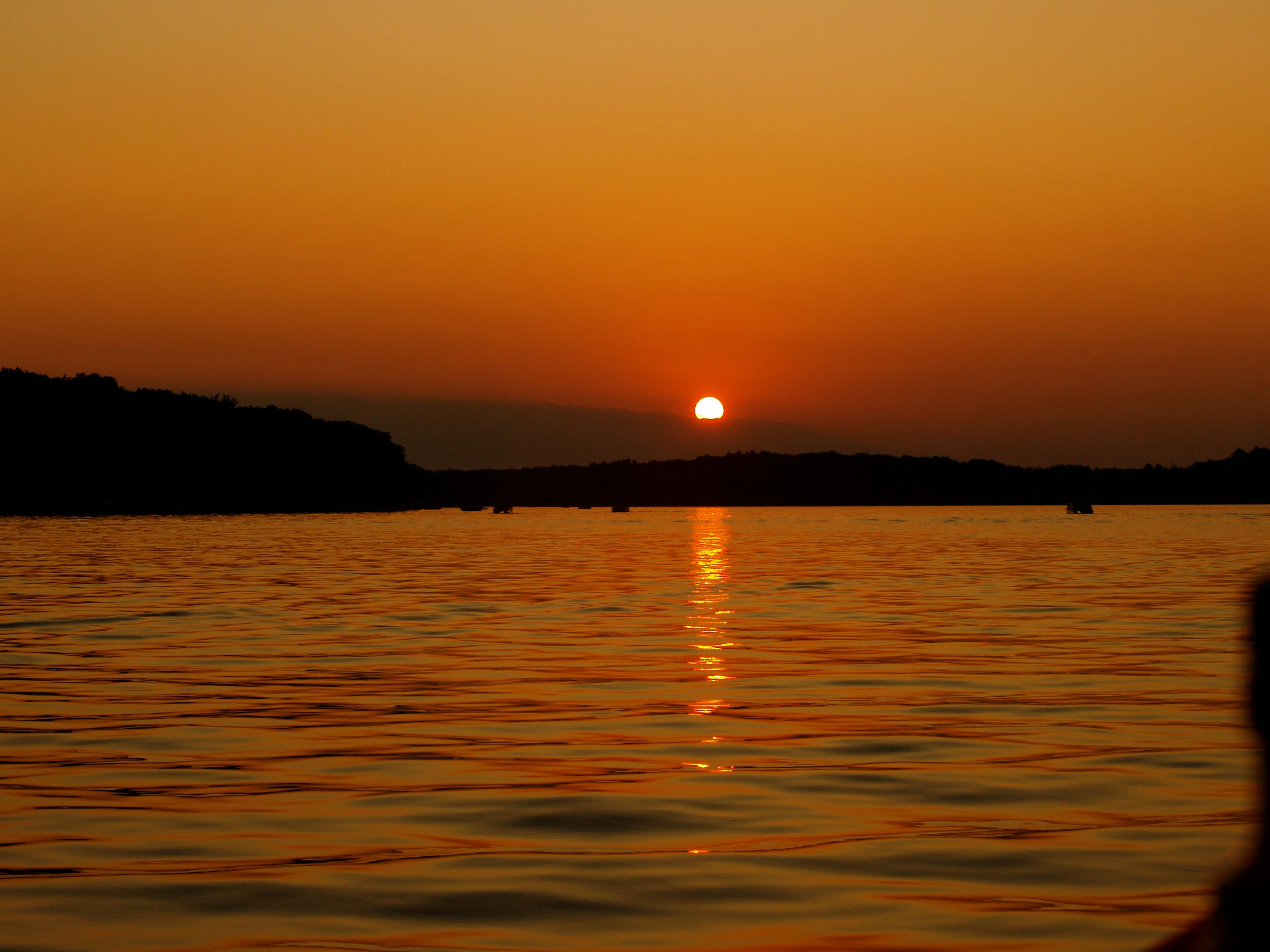 In the 1970’s and 1980’s …
In the 1970’s and 1980’s … 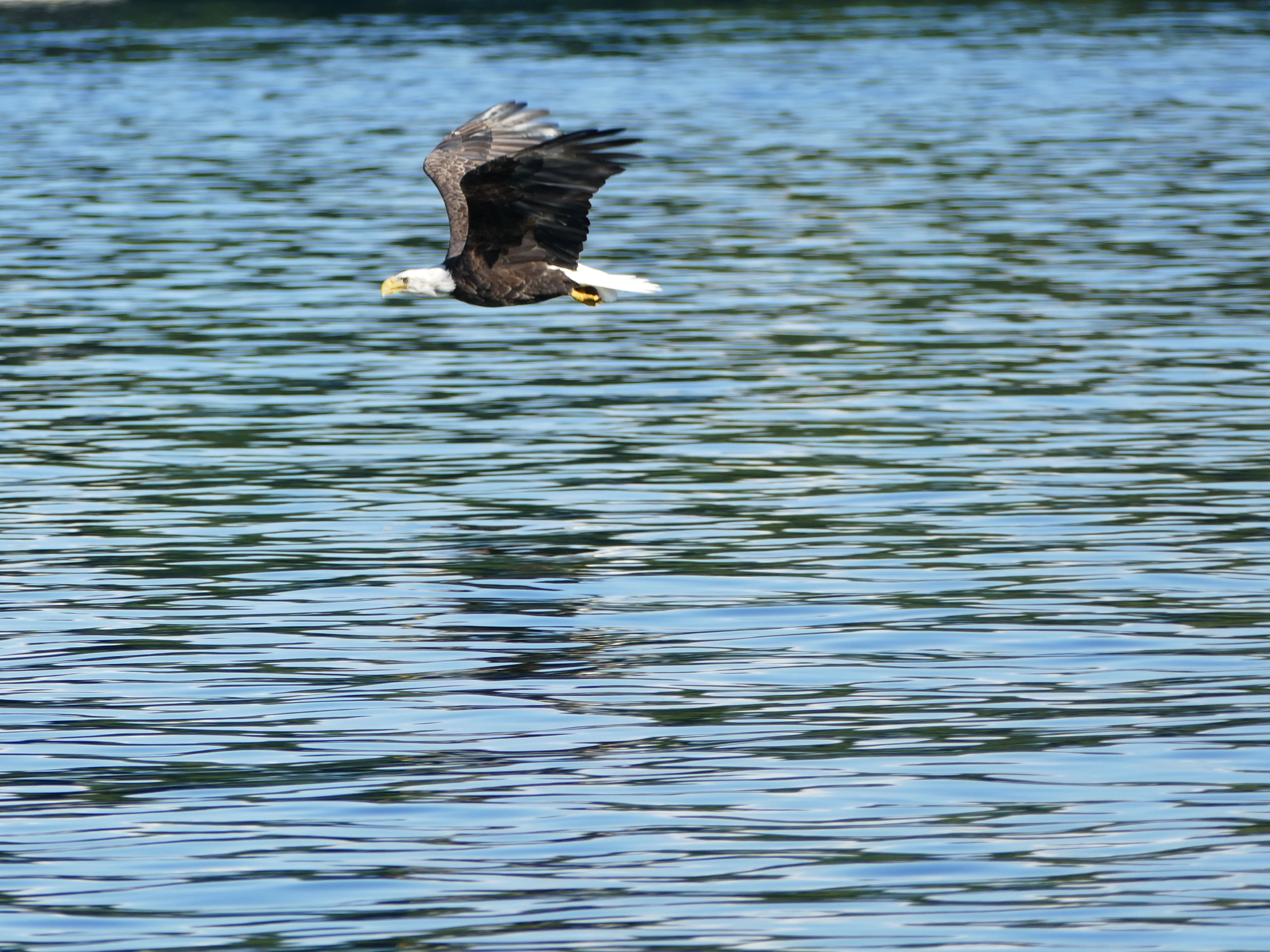 A focus on the improvement of water quality…
A focus on the improvement of water quality…  Back Lot Development
Back Lot Development 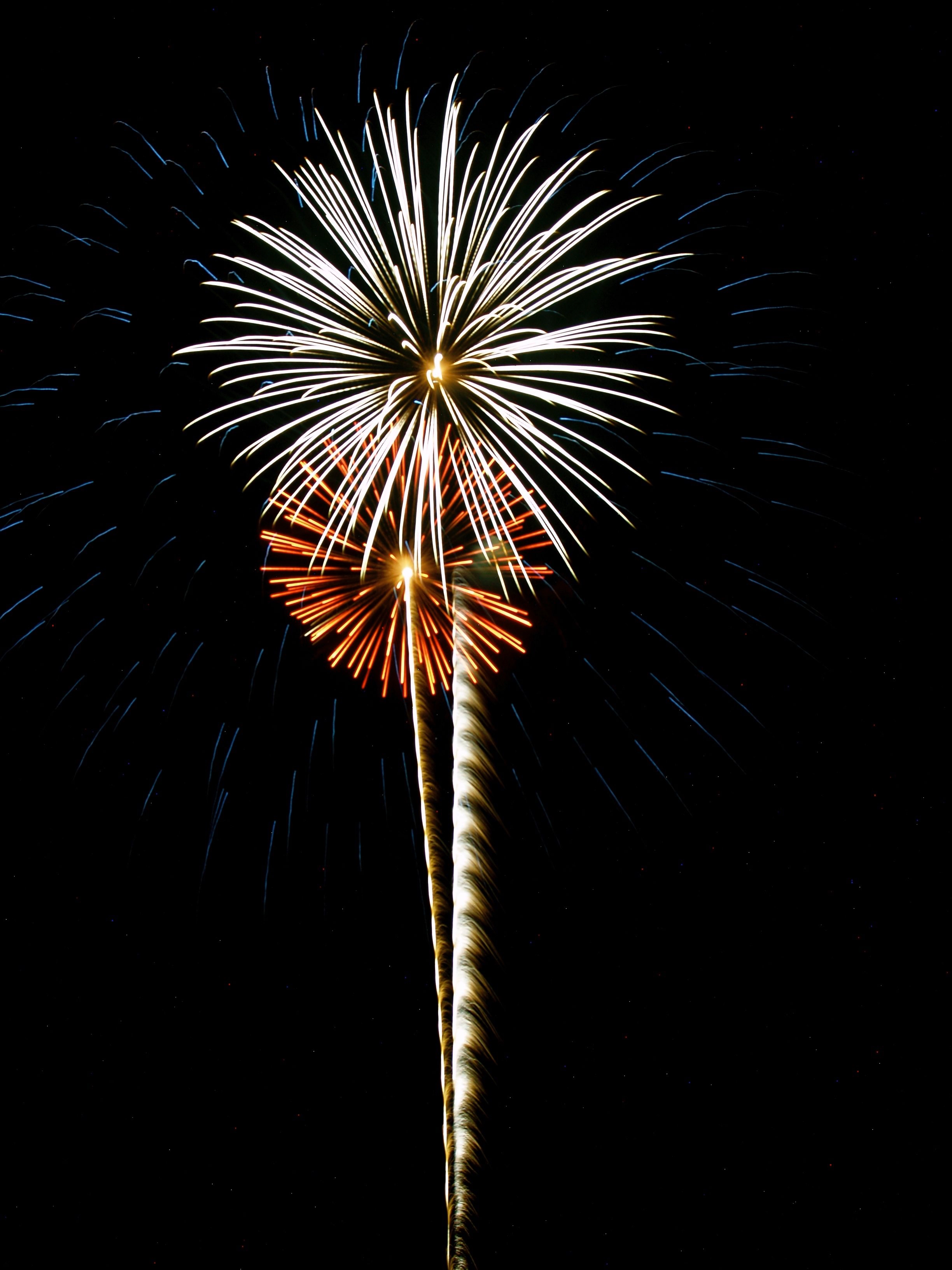 What the heck is a SECCHI Disk?
What the heck is a SECCHI Disk? 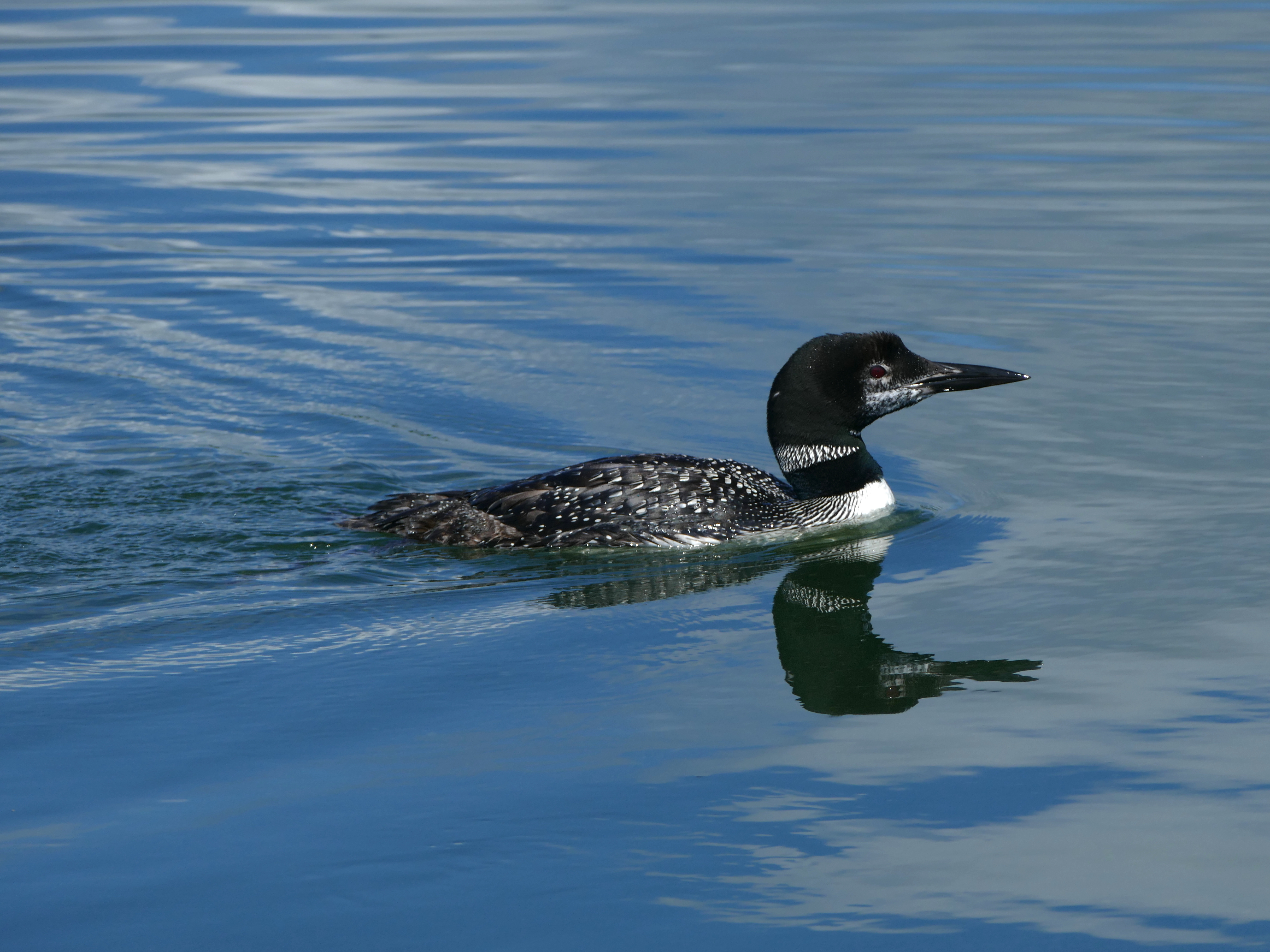 The Deer Lake Conservancy …
The Deer Lake Conservancy …  DLIA and Conservancy Projects …
DLIA and Conservancy Projects … 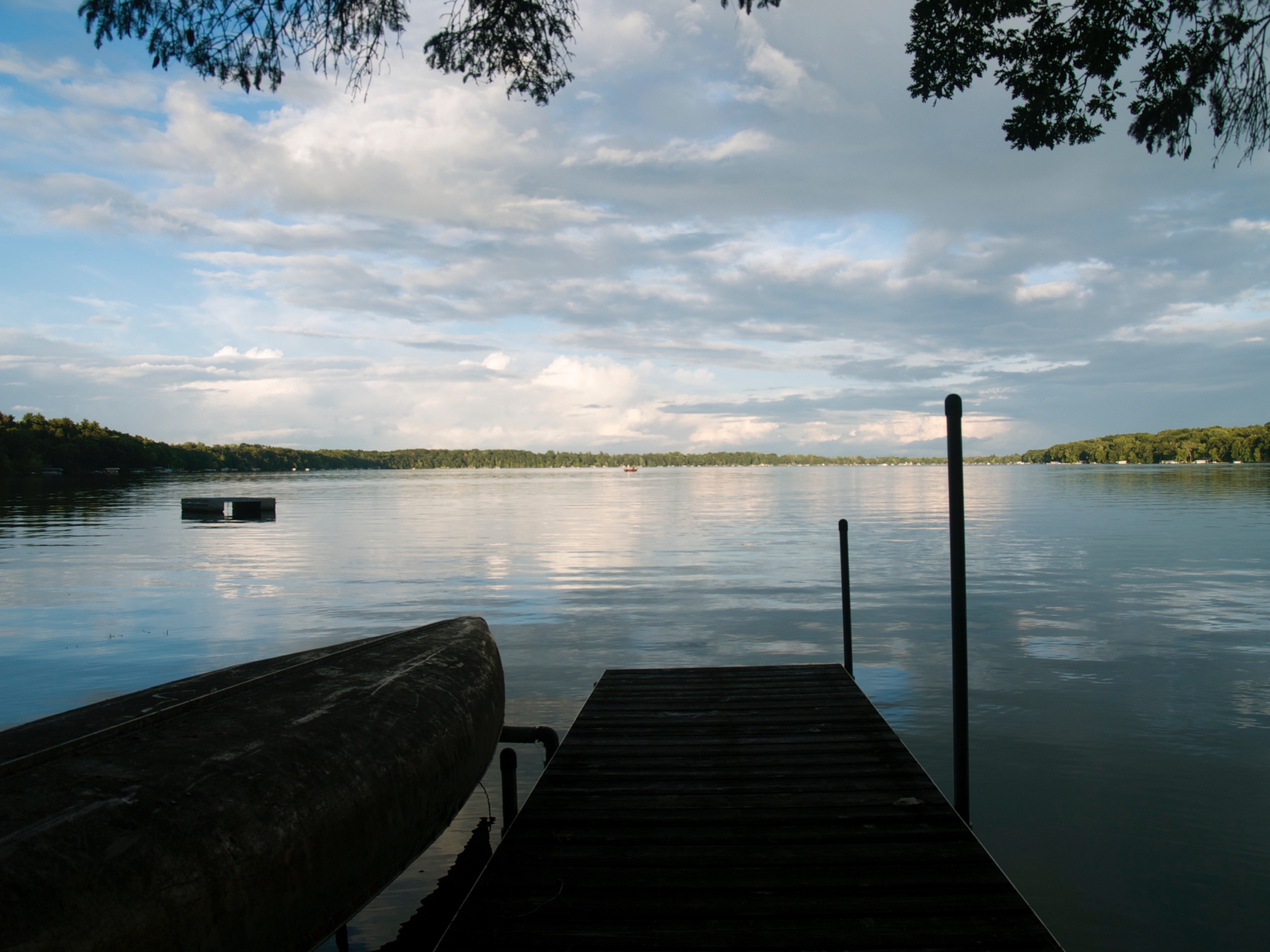 Power lines, cement plant and Highway 8
Power lines, cement plant and Highway 8  The future of Deer Lake
The future of Deer Lake And so it began….
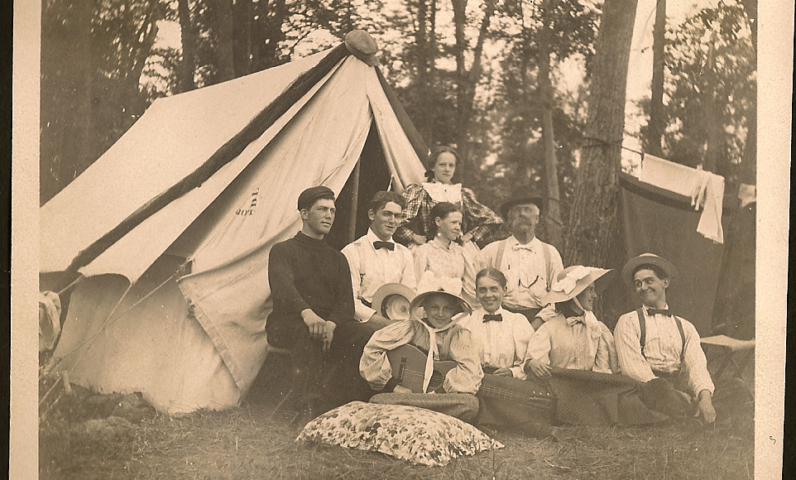
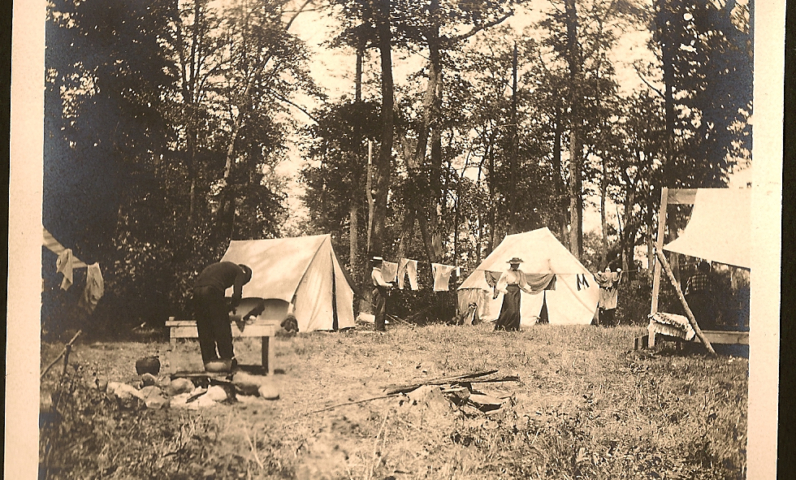
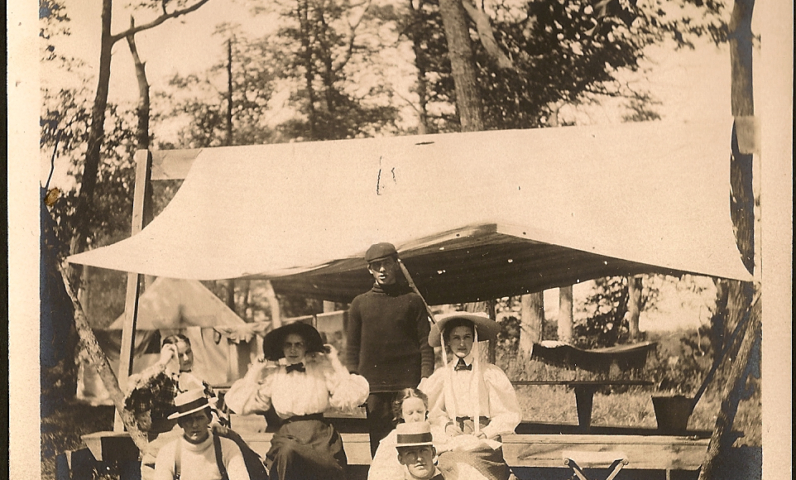
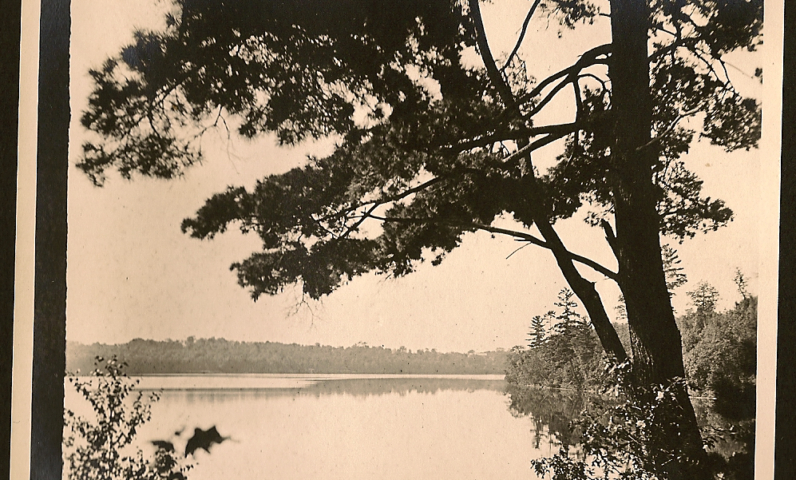
Stealthily, under the cover of approaching darkness, a group of Deer Lake residents approached the lake’s outlet at Mirror Waters and threw rocks and debris into the water. These residents were advocates of raising the lake’s water level (Durand Blanding, Interview, April 20, 2008). The drought of the early 1930’s had caused the lake level to fall considerably (Mary Coyte, Hungerford Point History). The following evening a different group of Deer Lake residents, opposed to raising the level of the lake, approached the outlet and removed the rocks and debris from the lake. They believed a high lake level would erode the banks of the lake and undermine trees.
Time and time again the high water advocates threw junk into the lake and those desiring low water removed it. This dispute led to the creation of the Deer Lake Improvement Association. Organized in 1939, the purpose of the DLIA was stated broadly: “The object of this association shall be to further and improve the beauties and attractions of Deer Lake, to prevent, if possible, its deterioration or damage from any cause whatsoever; to devise ways and means of increasing its value to the members and to the community at large” (Constitution and bylaws, section 2, 1939).
According to the Association’s Constitution, officers were to be the President, Vice-President, Secretary and Treasurer, plus an Executive Committee. This Committee was composed of the officers and three additional members elected by the total membership. All persons who owned or rented property on Deer Lake were eligible for membership. Dues were $2 annually until 1957 when dues became $5 per year. At least one annual meeting must be held by midsummer. Other meetings could be called by the Executive Committee or on the request of at least ten members of the Association. At the annual meeting, the President and Secretary were to report on the activities of the Executive Committee during the year.
From 1939 to 1969




Records of the Association’s activities from 1939-1957 are scarce. The Association did take action to settle the issue of the water level of the lake. Under the supervision of Wisconsin State Conservation Department, a dam was constructed at Mirror Waters to control the flow of water. The Association worked to achieve its objectives through such activities as spraying the lake to control algae, swimmer’s itch, and weed growth (William Knapp, President of DLIA, Letter to members and property owners, October 29, 1970). The Association became inactive in 1959. The issue dividing the membership may have been funding for July 4th fireworks, a dispute between using voluntary contributions or money from the dues.
In 1969, several lake residents became concerned about the water quality of the lake and DLIA was revived. The Association was legally incorporated, without stock and not-for-profit (Articles of Incorporation, July 22, 1971), and its Constitution and bylaws were revised. Its object was stated in slightly different language “…for the…purpose of promoting, assisting and encouraging the purity and wholesomeness of the waters of Deer Lake, Wisconsin and the development and maintenance of the real estate adjacent to said lake and preservation and improvement of the aesthetic beauty there of” (Bylaws of the Deer Lake Improvement Association, Inc.). All property owners on Deer Lake were eligible for membership; but to become a member, a candidate had to apply to the Board of Directors and that application constituted the candidate’s support of the purposes and regulations of the Association. When the directors approved the application, the candidate, upon payment of the year’s dues, became a member.
In the 1970’s and 1980’s …
The revised constitution enlarged the Board of Directors from six to nine and provided that the Board should elect the officers: President, Vice-President, Secretary, and Treasurer. The duties of each officer were defined and provisions were made for an annual meeting, and for special meetings if desired by the Board of Directors or if requested by ten members of the Association. Directors were to be elected at the annual meeting and a nominating committee selected candidates although members at the annual meeting could make additional nominations. Meetings were to be conducted according to Robert’s Manual of Parliamentary Rule and bylaws could be altered by a 2/3 vote of the members present at the meeting.
In the 1970’s and 80’s, the Deer Lake Improvement Association continued to work toward its objective of having good water quality and maintaining the quality of the environment surrounding the lake. The Board was reorganized; committees were established. Each committee was to have three board members whose terms were staggered so as to insure continuity from year to year. The committees were: “1) Safety: To include swim classes, boat safety training, coordination with the Conservation Department and Law Enforcement officials. 2) Membership and communication: To include all social events, July 4th activities, dues, etc. 3. Lake and Environment: To include the treatment of algae, weeds, zoning ordinances etc. (Minutes of the Board of Director’ Meeting, Sunday September 2, 1979). Swimming lessons were offered and a CPR class was held. Voluntary contributions by lake residents funded the 4th of July fireworks. A new Directory was published. Spraying of the lake for algae was continued. Since algae control was a problem for the entire lake, the decision was made to spread the cost to all property owners rather than depend on voluntary contributions. The two town boards, of Balsam Lake and St. Croix Falls, were asked to add an assessment for algae spraying to property owners’ taxes. In 1971, this assessment was $3.50.
A focus on the improvement of water quality…
Two specific issues of concern and action in the 1980’s were the proposal to build a motel at the lagoon and the question of back lots. The owner of the Lagoon, a popular restaurant on Deer Lake wanted to build a $2 million, 44-unit motel next to his restaurant (Standard-Press, June 19, 1980). He requested and was granted a special exemption to the Shoreline Protection ordinance by the Polk County Board of Adjustments (Polk County Ledger, May 1, 1980). The DLIA opposed the building of a motel and filed a lawsuit asking for a restraining order so that the court could review the BOA’s decision. The Association believed that the procedural errors had been made at the public hearing where Lagoon owner, Frank Skidmore, presented his application. The 150 opponents of the motel present at the hearing were denied the opportunity to speak. They and other DLIA members believed that BOA violated the Polk County Shoreline Protection ordinance by not properly considering the effects of a motel on the environment, pollution being a primary concern. However, on June 17, Polk County Circuit Court judge Robert Weisel sustained the BOA’s decision and lifted the restraining order. (Polk County Ledger, July 3, 1980).
Deer Lake Improvement Association members objected to Judge Weisel’s decision and wanted to take further legal action. Association members contributed money to make a further appeal possible. Another restraining order was issued to give the Judge time to reconsider. However, he denied the request to reconsider and lifted the restraining order. The case then went to the District Three Court of Appeals who upheld Judge Weisel’s decision and allowed the special exemption for the building of the motel. So the DLIA lost their court battles but “…they may have won the war. Their appeals forced the project to be postponed into an era of the high interest rates. So that Frank Skidmore, owner of the proposed motel will not construct it at least until interest rates mellow” (Polk County Ledger, September 24, 1981). The motel was never built and to the regret of Deer Lake residents the restaurant burned down.
Back Lot Development
Another topic of interest to the DLIA in the 80’s was that of back lot development. Could Polk County regulate lake back lots? That question was raised at the Zoning Committee meeting in early September of 1980. The issue arose because of a conflict on Balsam Lake. Balsam Lake Homeowners’ Association was concerned about a possible situation that could result in “letting numerous back lot owners have access to the lake,” (Standard Press, September 11, 1980). A group of interested lake owners representing four Polk County Lake Associations met to discuss problems that could occur with back lot development. They favored back lot development regulation and opposed access to lakes across their existing property. They recommended that each lake association appoint two members to study the problem and make recommendations to the Polk County Zoning Board (Minutes of the meeting of Polk County Lake Associations, January, 17, 1981).
The DLIA asked that all Polk County’s lake associations make suggestions for a county ordinance to limit back lot development. Zoning administrator, Gary Spanel was asked by the zoning committee to draw up recommendations for the ordinance (Standard Press, July 9, 1981). What action resulted at that time is not known. Known is that the first shoreline zoning took place in 1967 and as of 2008 private lake access from non-lake lots was regulated. Called “private access outlets” access must be 50 feet in width for the entire depth. Each strip cannot serve more than five single-family dwellings. No camping, RV parking or structures can take place on the access strip (Polk County Shoreline Ordinances, Article D).
From the 1990’s to the present, the Deer Lake Improvement Association has been increasingly active. The Corporation Articles were revised, many earlier projects were continued, and many new projects were undertaken.
What the heck is a SECCHI Disk?
The revised Articles of Incorporation stated the purpose of the DLIA in much the same language as it had in earlier versions, basically to protect Deer Lake and the real estate surrounding the lake. Membership in the Association was redefined and divided into voting members and sustaining members. “All owners of real estate within one mile of Deer Lake…shall be eligible for membership. Only one vote may be cast for each parcel of property…” Sustaining membership was available to all “occupants of real estate adjacent to Deer Lake…” but these members were not granted voting rights. The Board of Directors was enlarged to twelve members and the past President was made an ex-officio member of the Board. In other respects, the Articles of Incorporation and bylaws remained much the same.
A continuing goal of the DLIA is improving water quality of Deer Lake. Spraying the lake for algae has been continued. The Association has also sponsored monthly inspections of the public lake access to check for Eurasian milfoil. So far none has been detected. Water clarity tests, begun in 1987, (Deer Tales, 1990) have continued as have SECCHI disc readings. The DLIA applied for and received a grant from the Wisconsin Department of Natural Resources “To identify causes and solutions for the significant decline in water quality in Deer Lake” (Deer Lake Conservancy Report, Summer Edition 2008). The SECCHI disc readings were used to get information for the Barr Engineering studies as to how to best improve Deer Lake’s water quality. The quality was generally good, but according to the Deer Lake Planning Grant Report, “the Association should focus its attention on the areas with the greatest potential to increase the phosphorus loads to Deer Lake, specifically the urban and agricultural watersheds” (Deer Lake Planning Grant Report, p.24). The runoff water quality showed that the water quality of streams flowing into the lake “could be considered poor.” The report concluded that the possible increases in nutrient loadings from the agricultural watershed into the lake “is the single biggest threat” to its long-term health.
The Deer Lake Conservancy …
The Conservancy is not part of the Association but the DLIA has given the Conservancy support in Deer Tales by becoming a founding member and making annual contributions to the Conservancy. It has also urged its members to volunteer for Conservancy projects. The organizations have similar goals and have cooperated with each other.
The Conservancy was organized in 1995 as a not-for-profit corporation. According to the Deer Lake Conservancy, Inc. Its primary activities are to “prevent pollution, protect and improve water quality of the lake and surrounding environment and to prevent the intrusion of pollutants into the lake” (Deer Lake Conservancy, Inc. Public Annual Meeting Notice, 1997). To achieve these goals, the Conservancy acquires property and easements as well as acquires and/or constructs facilities.
Why two organizations with such similar goals? The Conservancy is a not-for-profit tax-exempt corporation, so dues and donations are deductible from federal and state taxes. This status gives it an advantage in raising money. The Conservancy also operates as a Land Trust so it can take title to real estate and create and sell land easements over to the Wisconsin DNR. Use of the easements must be available to the public. The Conservancy can install conservation practices on that land. The Associations emphasizes “immediate and short-term issues and threats to the lake” while the Conservancy “deals with long-range issues and planning” (Deer Tales, Spring 2007).
The Environmental Committee of the DLIA has been very active in dealing with immediate lake concerns. Surveillance and testing of water quality continues. Spraying is done to control algae although the treatment recommended by the DNR has changed and has become much more expensive. Instead of copper sulfate granules, the DNR mandates the use of chelated copper sulfate that costs almost four times as much. Control of curly leaf pondweed, a non-native invasive plant, continues. Fortunately, no Eurasian milfoil has been found to date. In an attempt to prevent its entrance into the lake, the DLIA hired an intern to staff the lake’s boat landing. His job was to educate landing users about the threat of invasive plants and encourage them to clean plants off their boats and trailers when entering and leaving the water.
DLIA and Conservancy Projects …
Over the last several years, the public landing has been renovated. The DLIA and the town of St. Croix Falls, supported by a grant from the DNR, shared the cost of repairs. Repairs were needed because a large drop-off at the end of the landing ramp caused by “power loading” boats onto trailers. The landing camp was excavated to a greater depth and extended to prevent the hole caused by power loading. The DLIA, in partnership with several organizations, installed a handicapped accessible floating dock.
Three major efforts of the DLIA in recent years have been the issue of clear cutting along power lines, the proposed location of an enlarged Highway 8 and the plan for a cement plant close to the lake. The clear cutting issue arose when Polk-Burnett Electric Co-Operative emphasized to its members the need for power line reliability. They believed that better reliability could be achieved by power line clear-cutting (Deer Lake, Spring 2001). This meant cutting all trees and brush for twenty feet on both sides of high voltage power lines all around the lake.
In many areas Deer Lake is surrounded by trees, so clear-cutting would result in widespread destruction of the natural environment. The alternative to clear-cutting was to have underground lines installed, which would have many benefits, such as: eliminating ugly overhead ones, preserving trees and probably improving electrical reliability. But residents would have to assume the costs.
The DLIA divided the lake into sections each headed by a member whose aim was to win approval for undergrounding the lines. Meetings were held, information distributed and support for the proposal grew dramatically. Clear-cutting had been scheduled to begin in Spring 2002, but by November 2001, in ten of eleven sections around the lake, members of the Deer Lake community raised funds necessary to bury the high voltage lines. Some community members contributed more than their share of the cost to insure the success of the project. Others who had overhead secondary lines leading to their houses also paid have those buried. It was an incredibly successful project, showing what positive results can be obtained when members of a community unite. Undergrounding saved trees, preserved the environment’s beauty and likely improved electrical services. This project may well serve as a model for other organizations in the state.
Power lines, cement plant and Highway 8
Highway 8 has long been a concern for residents. With increasing traffic volume, turn-offs to many south side Deer Lake roads can be hazardous. Local papers report almost weekly accidents along Highway 8 from St. Croix Falls to past Deer Lake. The state of Wisconsin mandated a safety study of the highway in 2000. Deer Lake residents focused attention on the section of Highway 8 between Highways 35 and 53 and the proposed widening to four lanes. At issue was the location of the highway: using the existing corridor or moving the highway about 1000 feet south and using the existing Highway 8 as a frontage road. Many residents wrote letters, attended meetings and lobbied urging that the existing highway should not be widened. The decision has been made to move the road south which will increase safety, decrease traffic noise, and decrease pollution into the lake.
The DLIA opposed the construction of a cement plant on Highway 35, less than one mile north of Deer Lake and within watershed 5. The Conservancy joined the Association in opposition to the proposed plant. In 2005, the Bauerly Brothers Concrete Company had applied for a special exemption to the zoning ordinance of St. Croix Falls to build and operate a redi-mix plant. Concerns about the plant centered on: “1) potential depletion of the aquifer supplying drinking water to residences, 2) potential chemical run-off and leaching into the Deer Lake watershed, 3) potential noise and air pollution, 4) highway safety issues, including truck traffic” (Deer Tales, Fall 2005). The planning commission and town board approved the special exemption. The DLIA and Conservancy both voiced concerns about the process of approval for special exemptions and also about compliance with the open meeting law. In April of 2008, Judge Rasmussen ruled the special exemption to be null and void. Consistent and vigorous opposition by many Deer Lake residents achieved their goal—no concrete plant will be built at this time.
The future of Deer Lake
The DLIA communicates with residents through email, Facebook, our Deer Tales newsletters; the Improvement Association and the Conservancy; and a Directory of Property owners: listing names, addresses, and phone numbers; and this website, www.deerlakewi.com, with information about Deer Lake organizations and projects.
In 1990, the DLIA started a newsletter, called Deer Tales. It is sent to all lake residents, not just DLIA members. Distributed three times a year, typically each issue contains a calendar of upcoming events, the President’s message, a Conservancy corner which describes the current activities of the Conservancy, and an Environmental Committee report. The newsletter also educates lake residents on a variety of issues such as boating regulations, jet-ski laws, boating safety, and environmental conservation. It encourages residents to learn to identify invasive weeds, those in the lake such as curly-leafed pondweed, and those on land, such as European buckthorn. It tries to encourage residents to value the “good” weeds in the lake and encourages the planting of buffer zones along the lakefront. Deer Tales also publishes names of recipients of the annual Hall of Fame plaques, first awarded in 2005. Awards are given to individuals or organizations that have contributed significantly to improving the quality of life on the lake.
The DLIA plans social events to promote community ties among residents. Events are designed to be self-supporting and offer a variety of activities. A number of events are planned around July 4th: a boat parade, light-up-the lake, and the ever-popular fireworks. Pontoon parties are held and new in 2008, music on the lake. The DLIA and the Deer Lake Conservancy also sponsor a picnic at Flagstad Farm Preserve.
More than two-thirds of the roughly 320 residents of Deer Lake belong to the Association. Dues are currently $50 a year and the Association asks for a separate voluntary contribution for fireworks and a $50 donation to water quality to defray costs of spraying for algae and curly leafed pondweed and other water quality/invasive species issues. Accomplishments of the Association far outweigh the cost of membership. The Association’s success reflects its willingness to cooperate with other organizations and the willingness of many members to volunteer countless hours of service. We should all be proud to be members of this Association and celebrate and support its accomplishments.
